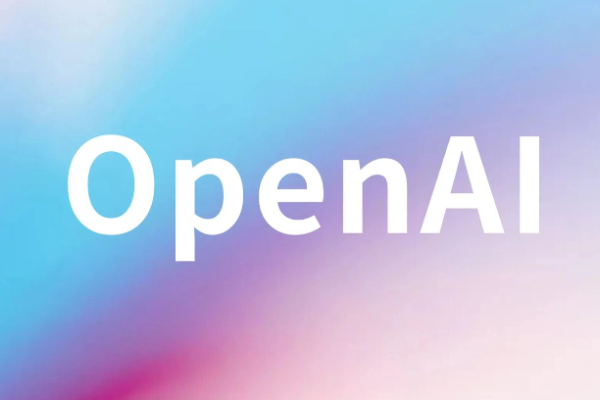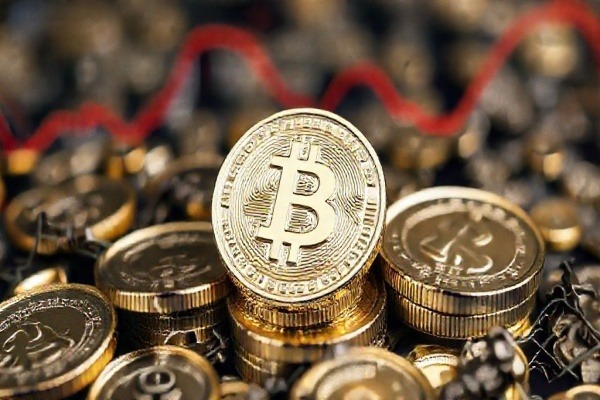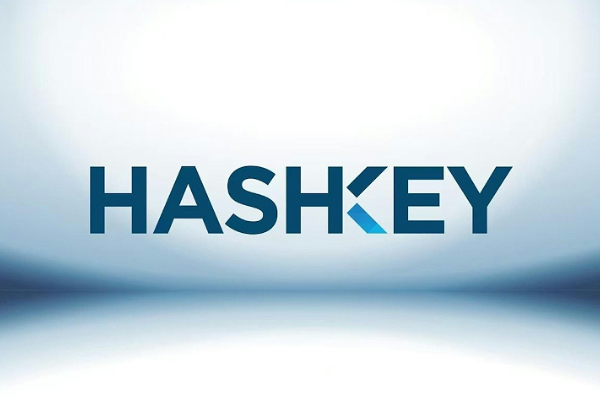Best Cryptocurrencies to Buy Now: Top Picks for December 2024 Growth Potential
Altcoin season is around the corner with renewed interest in DeFi, AI agents, and memecoins. Here are the top trends and coins with good growth prospects in December 2024.
In November, Bitcoin rose to $100,000, boosting the entire cryptocurrency market. Analysts expect the market to continue its strong momentum in December, with a target price of $100,000 to $200,000 in 2025, citing the possibility of the US establishing a strategic reserve of BTC.
In November, token holders of top large-cap and utility altcoins made huge profits. Altcoins such as Ethereum, Solana (SOL), Ripple (XRP), BNB, Dogecoin (DOGE), Cardano (ADA), Avalanche (AVAX), TRON (TON), and Toncoin (TON) have all achieved double-digit and triple-digit gains.
Some coins have soared to new all-time highs, but analysts believe the uptrend is not over yet. If so, these top tokens still have great investment potential if they soar in December and early 2025.
In addition, DeFi (decentralized finance) has recovered against the backdrop of sharp interest rate cuts by central banks. Therefore, DeFi tokens such as ETH, Maker, Lido, Morpho, Aave, etc. should be added to your cryptocurrency portfolio. Similarly, artificial intelligence agents and memecoins have become the hottest key trends in the market.
That is, you can only buy or sell cryptocurrencies using stablecoins such as Tether's USDT or Circle's USD Coin (USDC). These currencies also serve as "safe havens" during sharp price fluctuations (volatility) and are essential assets before entering the cryptocurrency ecosystem.
What is cryptocurrency?
Cryptocurrencies are digital currencies that operate smoothly without the need for third parties or centralized traditional financial institutions. Their use cases are constantly expanding, but the most common include e-commerce, cross-border payments, trading or investment.
Blockchain technology enables cryptocurrencies to achieve trustless transactions. The technology records all transactions on a decentralized ledger. Given the decentralized nature of the ledger, no single individual or company can control the blockchain network, which increases security and transparency and reduces counterparty risk.
Why are there so many cryptocurrencies?
There is a wide variety of cryptocurrencies, as different crypto projects have different goals and missions. As of September 2024, CoinGecko tracks over 14,000 crypto assets, while CoinMarketCap covers +2.4 million tokens.
Some are strictly used as transaction currencies, for example, USDT or Litecoin (LTC). However, others, such as ETH or BNB, act as platform currencies to keep their ecosystems functioning.
Some cryptocurrencies also help with infrastructure development or help with compliance. For example, Maker recently launched a new stablecoin, USDS, to drive expansion. However, the company was forced to include a freezing feature, such as the US IMF allows for the review of funds associated with illegal activities. This is one of the conditions for obtaining US compliance approval.
Top Cryptocurrencies to Invest in December 2024
Following the rally in November, several large and mid-cap altcoins hit all-time highs and posted huge year-to-date (YTD) gains. Overall, market trends suggest that altcoin season has arrived and picking the best cryptocurrencies to buy may be even more critical now.
Here are some of the best cryptocurrencies based on utility, investment potential, and market performance.
Bitcoin: The original cryptocurrency, widely known for its global adoption and as a store of value (“digital gold”).
Ethereum: Widely known as the birthplace of DeFi due to its smart contract capacity and active decentralized applications.
Solana: Popular for its low cost and high speed, making it a top DeFi and NFT platform.
XRP: Aims to solve cross-border payments with a fast, low-cost alternative.
Dogecoin: Originally a meme coin, but now accepted for trading.
Toncoin: An emerging layer 1 blockchain and a top performer for 2024.
Tron: Working to build a decentralized internet and become a cheap platform for sending stablecoins (USDT).
Cardano: Known for its rigorous scientific approach and governance structure.
Avalanche: Providing high throughput and minimizing latency for dApps.
BNB: The native token of Binance and its strong and growing ecosystem.
Stablecoins: Tether (USDT) or USDC (or USD Coin) can be used as a safe means to protect the value of capital during market fluctuations.
1. Bitcoin (BTC)
Bitcoin hit an all-time high (ATH) in November, just one step away from $100,000. BTC is a decentralized peer-to-peer cryptocurrency with a fixed maximum supply designed to hedge against inflation and government control. It is the world's largest cryptocurrency, but its limited supply of 21 million coins has earned it the title of "digital gold" and made it a potential store of value comparable to physical gold and silver.
First proposed by an anonymous person/group in 2008, Satoshi Nakamoto, the BTC network uses blockchain technology to ensure the verifiability and tamper-proofness of transactions. The network is secured by a mining process, or proof of work (PoW), where miners secure and verify transactions in exchange for BTC as a reward.
Nevertheless, its appeal to investors lies in its scarcity and hedging capabilities. BlackRock, the world's largest asset manager, acknowledges BTC as a "unique diversification factor," especially amid growing concerns about global currency stability. In 2024, with the approval of a US spot Bitcoin ETF, the asset has attracted more institutional interest. The recent approval of US spot BTC ETF options will further boost adoption.
BTC is the most suitable cryptocurrency for long-term investment. Its cumulative price has increased by 807,000 times in the past 14 years. Further growth is likely in the future, especially if the Federal Reserve begins an easing cycle. Standard Chartered Bank expects the price per BTC to reach $200,000 by the end of the year. After approaching $100,000 in November, will it break through this level in December and in 2025? Most market experts believe that it will; therefore, you should buy Bitcoin for the long term.
2. Ethereum (ETH)
Ethereum is a decentralized blockchain platform and DeFi (decentralized finance) The main feature of the Ethereum blockchain is its smart contracts run by the Ethereum Virtual Machine (EVM). Smart contracts allow the execution of established agreements without a third party, providing support for DeFi applications. This has enabled numerous decentralized applications (dApps), NFTs (non-fungible tokens), and other cryptocurrencies, making it popular among developers.
Ethereum initially adopted a high-energy PoW consensus model similar to BTC, but later changed to a proof-of-stake system (PoS) in 2022. The move reduced its power consumption, making Ethereum a more environmentally friendly alternative to BTC. Validators secure Ethereum's network at a relatively low cost compared to BTC miners.
Its native token Ether (ETH) is the preferred payment method for network gas usage and has benefited from its DeFi growth. ETH's price has risen significantly, from about $1 in 2016 to a high of $4,000 in 2021 - a return of up to 4,000 times.
However, ETH has performed poorly due to low investor demand for US spot ETH ETFs. In addition, it faces fierce competition from other smart contract platforms such as Solana and Sui.
Despite underperforming peers like SOL and BTC, analysts believe that ETH prices could reach $5,000-10,000 by the end of this bull run. In November, US spot ETH ETF flows turned positive, indicating renewed institutional interest, which could push prices higher.
In addition, renewed hopes that US spot ETH ETF staking rewards may be approved could accelerate institutional interest and the value of altcoins.
3. Binance Coin (BNB)
Binance cryptocurrency exchange is the world's largest exchange by trading volume and has grown into an incubation center with multiple crypto projects. BNB started as an exchange token but has grown into a utility token to support its vast ecosystem. Its powerful system also includes the BNB Chain blockchain, an EVM-compatible network with low transaction fees.
BNB holders can enjoy automatic airdrops from multiple incubation projects through Binance's Launchpad and Launchpool programs. Imagine passive income when the prices of these tokens soar. All of this helps boost the value of BNB.
However, the exchange was sued by the U.S. Securities and Exchange Commission in 2023 for violating securities laws and the U.S. Bank Secrecy Act. Binance was later fined $4 billion in 2024, and former CEO and founder Changpeng Zhao (CZ) was sentenced to four months in prison. Regulatory pressure suppressed the price of BNB, but it has now recovered. With CZ out of prison, the growth of altcoins may be further boosted.
BNB has risen 40,000% since its inception in 2017 and is up 110% so far this year.
4. Solana (SOL)
Solana hit an all-time high of $264, with a year-to-date return of 138%. It is considered one of the three major cryptocurrencies and a competitor to Ethereum. Unlike Ethereum's scalability issues and high gas fees before the Blobs update, Solana is a highly scalable, low-cost smart contract platform. It achieves this using a hybrid consensus model that combines Proof of History (PoH) and Proof of Stake (PoS), which reduces validation time.
The hybrid model enables Solana to ensure high transaction speeds, processing thousands of transactions per second at a low cost. This makes it a great chain for non-fungible tokens (NFTs) and DeFi applications, appealing to both small-scale and institutional users.
However, the network has experienced several outages in the past. However, mitigation measures have been taken to address this issue, and the network has not seen an outage since March.
In addition, its second validator client, Firedancer, went live on the testnet in September, processing 1 million transactions per second. This is a massive expansion and decentralization transformation.
Nonetheless, several potential issuers have filed U.S. spot SOL ETF applications with the SEC after Trump's victory. With the Trump administration supporting cryptocurrencies, analysts believe that the SOL ETF is just a question of "when" rather than "if." In the long run, the new capital inflow could have a net positive impact on the value of SOL. In short, SOL could surge higher despite hitting an all-time high (ATH) of $264.
5. Ripple (XRP)
XRP is the native token of the XRP Ledger, created by Ripple Labs. The network aims to enable fast and low-cost global payments. To achieve this goal, it uses a proprietary consensus mechanism (XRP Ledger Consensus Protocol) to enable fast and efficient cross-border payments.
In addition, Ripple uses the On-Demand Liquidity (ODL) service and XRP to solve liquidity problems and provide a faster alternative to the SWIFT platform for instant conversion.
The company also entered the RWA (real world asset) tokenization field by investing in OpenEden, enabling enterprises to use US Treasury bills on the chain. Ripple has also launched a stablecoin (RLUSD) that can be officially launched at any time to support its strong ecosystem and jointly promote the practicality of XRP.
Nevertheless, the value of XRP has declined during the long-term lawsuit against Ripple by the US Securities and Exchange Commission that began in 2020. The US Securities and Exchange Commission accused the company of violating securities laws by selling XRP tokens. However, the two parties have reached a settlement, and the company recently won a partial victory in its lawsuit against the SEC.
The case may be over soon, especially under the incoming pro-cryptocurrency government. The market seems to have priced this in after the coin rose 240% in November, pushing XRP to a 2021 high of $1.9. This may reduce the upside potential expected in the medium term. However, given its global remittance utility, it has huge long-term growth potential.
6. Dogecoin (DOGE)
Dogecoin is a popular meme coin. In November, it outperformed top coins including BTC, with a year-to-date increase of 377%. It was created as a joke in 2013 and quickly gained popularity and social attention due to its community-driven nature. However, unlike BTC, Dogecoin has an unlimited supply, resulting in extremely high inflation.
Despite inflationary pressures and the excitement surrounding its debut, DOGE’s price has surged, thanks to strong community support and endorsements from top public figures like Elon Musk. DOGE has risen more than 3,500% in 2021 during the last market cycle bull run.
However, DOGE’s endorsements by Elon Musk and Mark Cuban have also sparked accusations of price manipulation from some investors. Dogecoin-related tweets from Musk and Cuban always sparked wild swings in price and value, forcing some investors to sue them. Musk was eventually cleared of the charges, though.
Nevertheless, most analysts, including Ali Martinez, believe that DOGE could break through $1 and aim for $10. If so, it may not be too late to enter DOGE at current levels.
7. Toncoin (TON)
Toncoin (TON) is the native token of the Open Network (TON) network, a layer-one blockchain and smart contract platform that has emerged as one of the best performing platforms of 2024.
It was initially developed by Telegram, but later handed over management to the TON Foundation. It connects to the Telegram messaging app through the TON Space wallet, allowing users to conduct seamless crypto transactions.
Like Ethereum, it uses a proof-of-stake consensus model, which ensures its environmental friendliness due to its low energy consumption. A Bitget research report predicts more potential opportunities in its decentralized finance and novel Tap-to-Earn sectors.
In addition, the blockchain is eating into Tron’s stablecoin market share. Its relatively cheap fees make it a competitor for stablecoin (USDT) transfers. Its USDT transfer volume exceeds $1 billion, making it a direct competitor to Ethereum and Tron. Will these strong fundamentals boost TON’s value?
8. TRON (TRX)
Tron (TRX) is another blockchain platform that supports smart contracts and DeFi applications. Its goal is to create a decentralized internet. Tron also utilizes a Proof of Stake (PoS) consensus mechanism similar to Ethereum. TRX is a utility token in its robust ecosystem that facilitates applications and transactions.
TRX was originally a token on Ethereum, but later migrated to the Ethereum blockchain in 2018 to achieve higher scalability and better performance. The migration attracted widespread attention in the market in January 2018, and TRX’s price also experienced dramatic fluctuations. TRX surged from around $0.04 to $0.21, a 400% increase in less than two weeks.
Tron’s founder, Justin Sun, wanted to focus the platform on entertainment applications and content sharing. To this end, he acquired and integrated the file-sharing platform BitTorrent.
The platform has become the second largest stablecoin market after Ethereum due to its low fees.
However, Sun faces multiple legal challenges, including a pending SEC lawsuit. Despite these obstacles, the network’s ecosystem continues to grow. As of November 2024, TRX is up 90% year-to-date.
9. Cardano (ADA)
Cardano is another blockchain platform with smart contract capabilities, founded by Charles Hoskinson, one of the co-founders of Ethereum. Its unique design borrows from both Ethereum and Bitcoin networks. For example, its consensus model utilizes Proof of Stake (PoS) in the Ouroboros protocol to remain eco-friendly.
It also uses a Bitcoin-like UTXO architecture (unspent transaction output) to drive its smart contract capacity and dApp development. However, unlike Solidity used in Ethereum smart contracts, Cardano utilizes Plutus and Marlowe programming languages to support its contracts.
The Cardano Foundation and two other entities, IOHK and Emurgo, drive the development of the Cardano network. The Chang hard fork that went live on September 1st enhanced on-chain governance and smart contract capabilities. With seamless governance and dApp development capabilities, Cardano also increased its decentralization.
ADA is Cardano’s network native token and utility token. It rose by 200% in the first phase of this cycle, rising from $0.24 to $0.8 between October 2023 and March 2024. More gains could be in store if ADA attempts to retest its 2024 highs or even ATH. Recent integration with the Bitcoin network via the BitcoinOS bridge could help ADA’s prospects.
In November, the altcoin hit a new cycle high above $1, about 64% away from its 2021 high of $3.1. If the altcoin targets its 2021 highs, ADA’s value could grow by more than 60%.
10. Avalanche (AVAX)
Avalanche (AVAX) is another first-layer blockchain with smart contract capabilities that can be used to develop dApps (decentralized applications). It also positions itself as a competitor and alternative to Ethereum. To do this, the network leverages high speed and security as it can process 6,500 transactions per second without overwhelming scalability.
In addition, Avalanche takes a unique approach to its consensus mechanism. Unlike the Bitcoin or Ethereum networks, Avalanche uses three independent mini-chains to handle different tasks: token creation, smart contract/dApp development, and node/network validators. AVAX is the native token that drives the utility of the entire ecosystem, including its DeFi sector.
AVAX surged 600% in the first phase of this bull run, jumping from $9 to over $60. Although it wiped out its gains in 2024, there is still a lot of room for growth and recovery.
11. AI Super League (FET)
The AI Super League is a decentralized network of three leading cryptocurrency AI networks (SingularityNET, Fetch.ai, and Ocean Protocol). The network aims to build autonomous economic agents and compete with traditional AI companies such as OpenAI. Autonomous agents can handle a variety of tasks, from optimizing trading setups to booking flights. They can also collaborate, learn from each other, and share valuable insights across multiple sectors or fields.
FET tokens are a vital utility asset in the ecosystem and are used for governance (voting rights) and payments (protecting AI agents). In addition, AI hype in traditional markets (such as Nvidia) has also driven the development of FET. Since the sell-off in August 2024, FET has rebounded more than 130%, from $0.7 to $1.6. As long as AI hype continues to dominate, it has upside potential.
Other notable cryptocurrencies:
The assets shared above are just the tip of the iceberg in the vast altcoin field. As more and more experts call for the arrival of altcoin season, here is a list of top stablecoins, DeFi tokens, and emerging blockchain platforms to watch out for;
Stablecoins (USDT and USDC):
Stablecoins are digital assets pegged 1:1 to fiat currencies that act as “price stabilizers”, especially during market volatility.
For example, if BTC falls more, users will switch to stablecoins to protect their funds from depreciation. When BTC starts to rise again, they will rush to buy discounted BTC with stablecoins. This makes them essential in the volatile cryptocurrency market.
Tether’s USDTUSDT1.00 and Circle’s USD CoinUSDT1.00 are the most common stablecoins pegged 1:1 to the US dollar. Since most of the assets’ trading pairs involve USDT or USDC, users cannot trade without them.
Maker (MKR):
Maker Macquarie University $1,519 is one of the pioneers of DeFi and a leading player in the lending and stablecoin space. One of its stablecoins, Dai (DAI), is one of the most popular stablecoins in the DeFi space.
Its lending business through SparkLend has also seen significant growth, driving the development of MKR, the native utility and governance token in the ecosystem. The company recently rebranded to Sky with the goal of massive expansion, further boosting the value of the MKR (or SKY) token.
Aave (AAVE):
Aave is another large and dominant lending company in the DeFi and stablecoin space. Like Maker, its ecosystem is powered by its native token AAVE.
Berstein analysts recently predicted a DeFi resurgence and claimed that falling US bank rates could make DeFi yields attractive. The analysts identified AAVE as one of the potential assets that could benefit from the potential demand. If so, AAVE and top DeFi tokens should be on your watchlist.
Uniswap (UNI):
Uniswap is arguably one of the most popular DEXs (decentralized exchanges) based on Ethereum. The platform has a trading volume of over $2 and supports most trading pairs. Its native token UNI is used for governance (voting rights). Despite the upside potential of UNI, the SEC plans to take enforcement action against DEXs that violate securities laws.
Ethereum L2s:
Top Ethereum L2s, such as Arbitrum, Optimism, and Polygon, are also worth exploring. These top scaling solutions for Ethereum could benefit from the DeFi resurgence. After underperforming in early 2024, ARB and OP have seen strong momentum in November and could carry over into December.
Aptos (APT):
Aptos is a layer-one blockchain that aims to compete with Ethereum and Solana as the home of DeFi and a platform for dApps. It is highly scalable and performant thanks to its modular transaction processing. APT is the network utility token that can benefit from the platform's growing DeFi.
Sui (SUI):
Sui is a layer-one blockchain network that market observers liken to the early stages of Solana. It is unique in its high performance and developer-friendly features. This makes it a platform with great potential for the next generation of dApps and DeFi solutions. SUI is the token that supports its ecosystem and has received a lot of attention recently.
Casper (KAS):
Casper is another blockchain network that provides Bitcoin's security features through the PoW (Proof of Work) mechanism. Unlike Bitcoin, it is faster and more scalable thanks to the GhostDAG protocol. The protocol supports multiple blocks to coexist and maintain consensus across the network.
Kaspa is therefore fast and scalable, features that are perfect for paymentransaction or data processing functions. In fact, most of the top BTC miners like Marathon Digital have added Kaspa to their mining operations as part of diversification efforts.
AI Agents and memecoins:
AI agents and memecoins have become one of the hottest market trends in November. Autonomous AI bots capable of on-chain analysis, trading, and social media influence have flooded the market. Analysts predict that dominance will increase further in 2025 as the hype of AGI (Artificial General Intelligence) grows.
If so, then the top platforms incubating AI agents should be on your watchlist. Virtual Protocols (VIRTUAL) is the Pump.fun of AI agents on Base, which recently crossed $1 billion in market cap. Virtual ecosystems such as AIXBT, SEKOIA, VADER, and others also rose by triple digits.
Grass (GRASS) is another AI agent launcher and virtual protocol alternative on Solana. Other widely followed AI memecoins such as Goatseus Maximus (GOAT) and Act I: The AI Prophecy (ACT) can also be added to the watch list.
While this category can generate huge returns in the short term, it is risky and speculative and not suitable for long-term investment.
How to Choose the Best Cryptocurrency to Invest:
As with traditional investments, choosing crypto assets requires a careful balance between investment goals, risk profile, and preferences. Are you looking for short-term gains, long-term reforms, or just diversification? These questions can gauge your crypto investment goals.
Next, assess your risk tolerance and preferences, as volatility in the cryptocurrency market can be your good friend or bad enemy. That said, potential investors must do their due diligence to understand potential investment projects to avoid falling for scams or pyramid schemes. Before investing, evaluate the use cases of blockchain projects, including whether there are available products, market growth potential, team and development plans, etc.
Finally, market capitalization and liquidity are also key factors. They help gauge the adoption rate of the project and the ability to enter or exit trading positions with less slippage (loss). High market capitalization and liquidity of exchanges are considered ideal for investment. However, low liquidity can make entering and exiting trading positions challenging.
How to Invest in Cryptocurrencies:
Once you have chosen the top crypto assets to invest in, the next step is to actually invest.
First, choose a cryptocurrency exchange or broker that offers cryptocurrency trading. Before opening a trading account with an exchange or broker, read the user agreement and understand the terms and conditions, including trading fees.
Next, fill in the KYC (Know Your Customer) details, including identity verification and 2FA (two-factor authentication) to ensure security and platform compliance. Then, link your credit card, bank account, or any option on the platform to fund your trading account.
You can buy and sell cryptocurrencies with a well-funded account and pocket the difference. This can also be done directly through some crypto wallets such as Phantom. However, the potential gains of an asset may also depend on the trading strategy you choose. For long-term holding, users simply lock up the asset for a period of time and then sell it for a profit.
However, for those who want to make short-term or medium-term gains, swing trading is a better strategy. It involves buying low, holding the asset for a few days or weeks, and profiting when the price rises.
Day trading and scalping can also bring short-term gains. For day trading, speculators make several trades per day, while scalping involves making small profits through several trades in a day. The total returns of scalping and day trading can be very considerable.
The above strategies are perfect for beginners and cryptocurrency enthusiasts. However, other strategies, including direct purchases, early investments in new projects, cryptocurrency options, complex income products, etc., are also suitable for experienced institutional investors.
Pros and Cons of Cryptocurrency Investing:
Investing in cryptocurrencies can bring rewards, but there are also risks.
Not to mention security risks such as phishing attacks, which can be overwhelming, especially for beginners. Therefore, cryptocurrency investing is not suitable for everyone, and as a rule of thumb, only invest funds that you are willing to lose.
Cryptocurrency Tax Filing
In most jurisdictions, cryptocurrencies are treated as capital assets during tax filing. Therefore, any gains from cryptocurrency trading are subject to capital gains tax. Every cryptocurrency trading profit or purchase you make may come with a tax liability. In fact, some brokerage firms are required to share these details with regulators (e.g. in the United States).
Properly documenting cryptocurrency gains and losses is essential to avoid run-ins with tax regulators. So, keep accurate records of cryptocurrency transactions and note key details like amounts and dates.
Calculate your cryptocurrency gains and losses based on the transaction, using cost and sale prices. But most importantly, stay updated on any local cryptocurrency tax rules and updates.
Conclusion
Cryptocurrency investing can be very exciting and rewarding, but it can also be very risky. In addition, there are many cryptocurrency projects and new hot trends that can be confusing for new cryptocurrency investors.
However, this report has selected some of the best cryptocurrencies, hot trends, and risk aspects for you to consider in your cryptocurrency portfolio.













